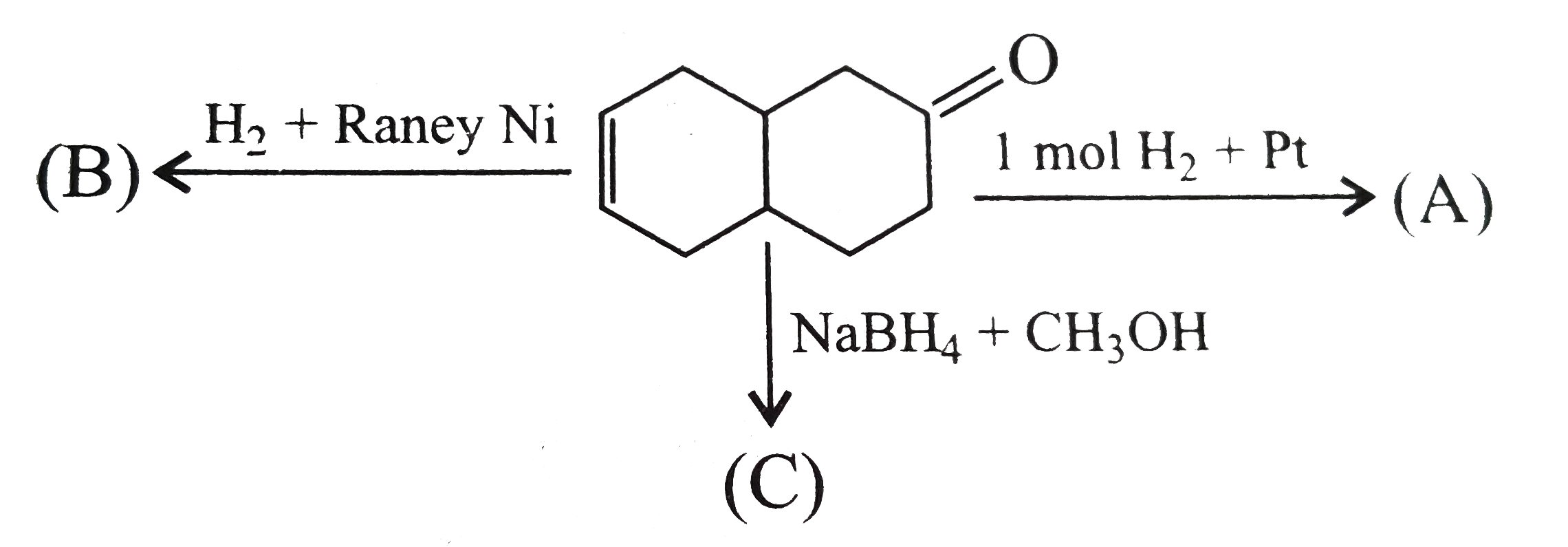Interconversion of terminal to internal alkyne and vice versa takes place by the following reagents (A) and (B):

Reagents (A) and (B) are:
(a) NaNH2 and alc. KOH
(b) alc. KOH and NaNH2
(c) alc. KOH and P−2 catalyst
(d) NaNH2 and Lindlar's catalyst
The correct Answer is:A
Step by step video & image solution for Interconversion of terminal to internal alkyne and vice versa takes place by the following reagents (A) and (B): Reagents (A) and (B) are: by Chemistry experts to help you in doubts & scoring excellent marks in Class 11 exams.
Updated on:21/07/2023Topper's Solved these Questions
- ALKYNESBOOK - CENGAGE CHEMISTRY ENGLISHCHAPTER - ALKYNESEXERCISE - Exercises (Archives - Single Correct Answer Type)
6 Videos
- ALKYNESBOOK - CENGAGE CHEMISTRY ENGLISHCHAPTER - ALKYNESEXERCISE - Exercises (Archives - Fill in the Blanks Type)
3 Videos
- ALKYNESBOOK - CENGAGE CHEMISTRY ENGLISHCHAPTER - ALKYNESEXERCISE - Exercises (Multiple Correct Answers Type)
25 Videos
- ALKENES AND ALKADIENESBOOK - CENGAGE CHEMISTRY ENGLISHCHAPTER - ALKENES AND ALKADIENESEXERCISE - Single correct Answer
14 Videos
- APPENDIX - INORGANIC VOLUME 1BOOK - CENGAGE CHEMISTRY ENGLISHCHAPTER - APPENDIX - INORGANIC VOLUME 1EXERCISE - chapter-7 Single correct answer
1 Video
Similar Questions
What are the following:
Tollens' reagent
View SolutionWhat are the following:
Baeyer's reagent
View SolutionWhat are the following:
Tollens' reagent
View SolutionWhat are the following:
Baeyer's reagent
View SolutionWhat are the following:
Baeyer's reagent
View SolutionWhat are the following:
Tollens' reagent
View SolutionWhat are the following:
Baeyer's reagent
View SolutionWhat are the following:
Brady's reagent?
View SolutionWhat are the following:
Brady's reagent?
View Solution
The reagents (A),(B), and (C) are:
View Solution
